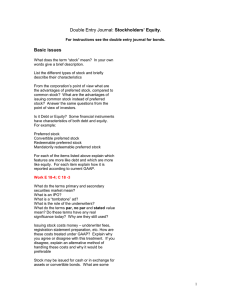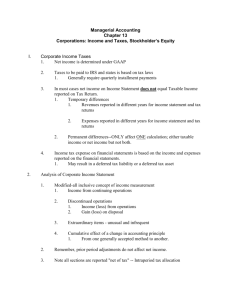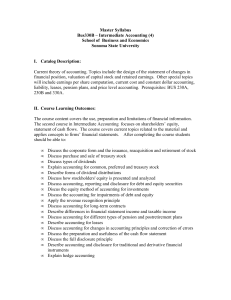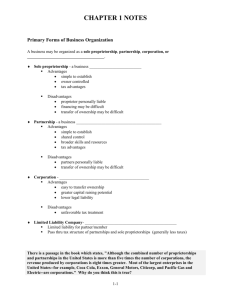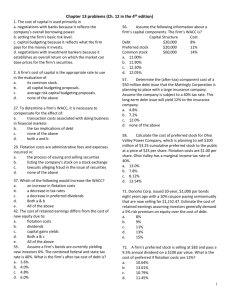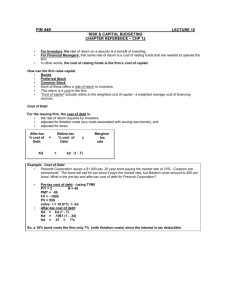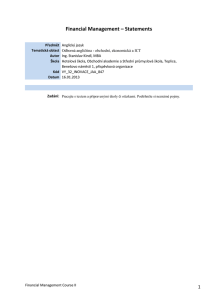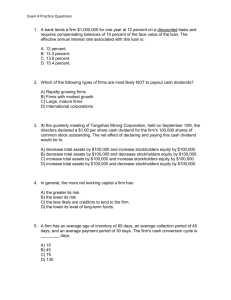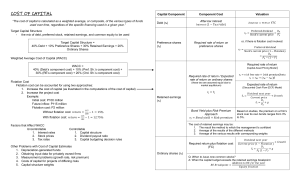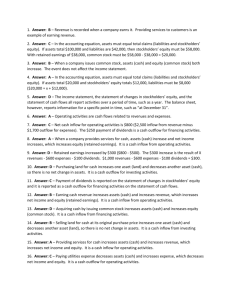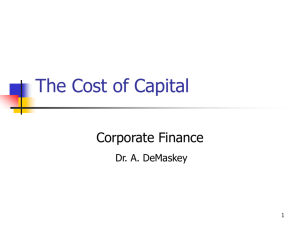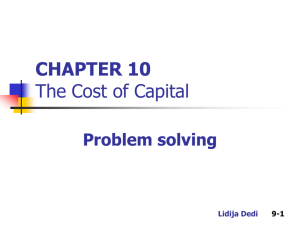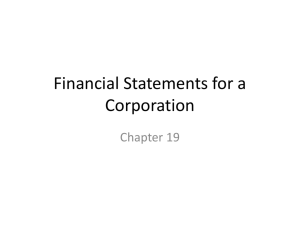THE SAMPLE QUESTIONS
advertisement
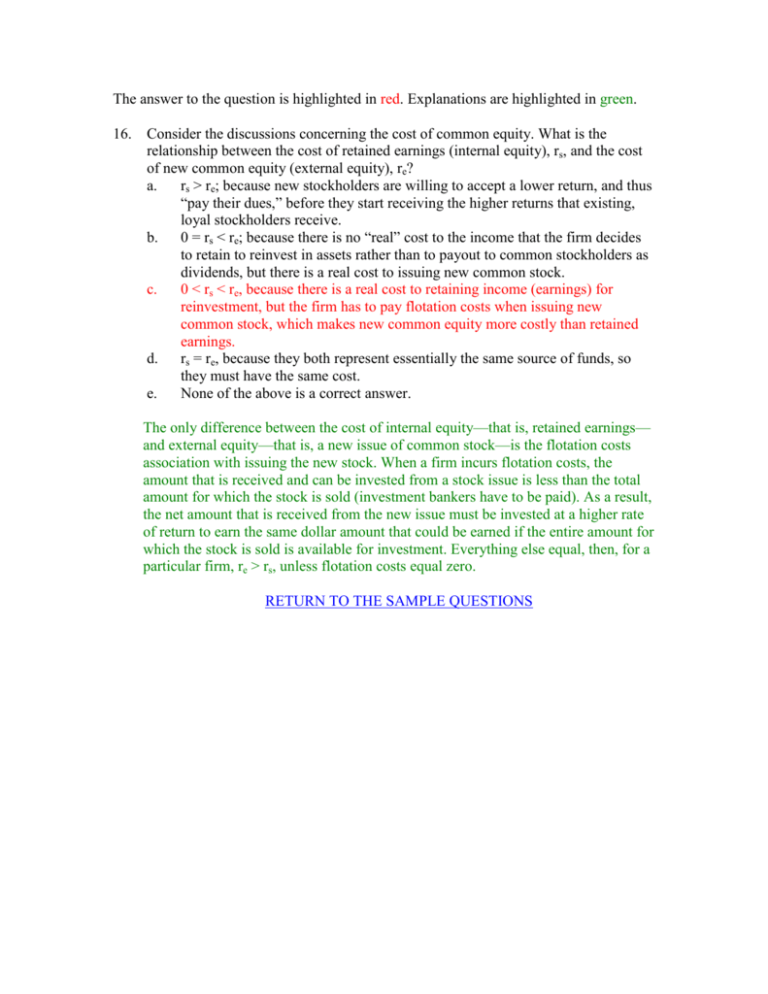
The answer to the question is highlighted in red. Explanations are highlighted in green. 16. Consider the discussions concerning the cost of common equity. What is the relationship between the cost of retained earnings (internal equity), rs, and the cost of new common equity (external equity), re? a. rs > re; because new stockholders are willing to accept a lower return, and thus “pay their dues,” before they start receiving the higher returns that existing, loyal stockholders receive. b. 0 = rs < re; because there is no “real” cost to the income that the firm decides to retain to reinvest in assets rather than to payout to common stockholders as dividends, but there is a real cost to issuing new common stock. c. 0 < rs < re, because there is a real cost to retaining income (earnings) for reinvestment, but the firm has to pay flotation costs when issuing new common stock, which makes new common equity more costly than retained earnings. d. rs = re, because they both represent essentially the same source of funds, so they must have the same cost. e. None of the above is a correct answer. The only difference between the cost of internal equity—that is, retained earnings— and external equity—that is, a new issue of common stock—is the flotation costs association with issuing the new stock. When a firm incurs flotation costs, the amount that is received and can be invested from a stock issue is less than the total amount for which the stock is sold (investment bankers have to be paid). As a result, the net amount that is received from the new issue must be invested at a higher rate of return to earn the same dollar amount that could be earned if the entire amount for which the stock is sold is available for investment. Everything else equal, then, for a particular firm, re > rs, unless flotation costs equal zero. RETURN TO THE SAMPLE QUESTIONS
